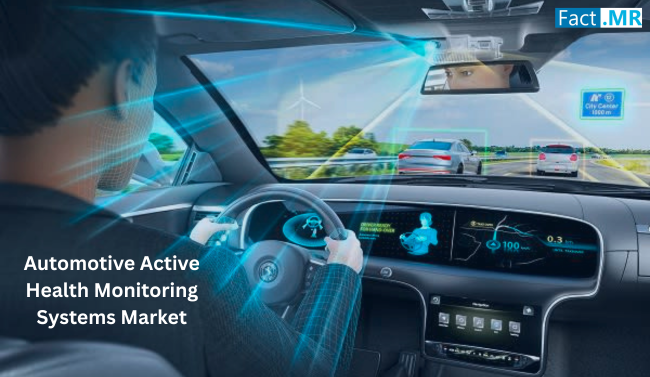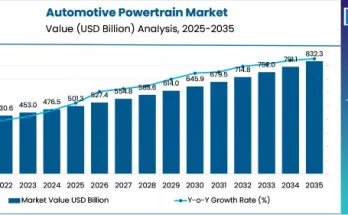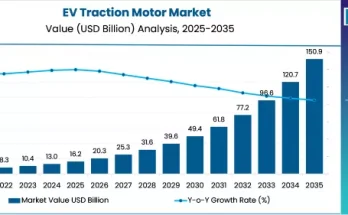As road safety demands innovation and drivers become more health-conscious, the Automotive Active Health Monitoring Systems (AHMS) market is entering a transformative era. These systems, built directly into vehicles, monitor vital signs, alert drivers to potential health risks, and can even assist in emergency response. Combining biometric sensors, AI analytics, and smart interfaces, AHMS represents a new frontier in both automotive safety and personal wellness.
Market Momentum & Future Growth
The AHMS market has experienced significant expansion and is projected to grow exponentially in the coming decade. As vehicles become more intelligent and connected, embedding health monitoring systems is no longer a futuristic concept—it’s becoming a competitive necessity. With rapid developments in sensor technology and a growing emphasis on wellness and safety, this market is set to cross multi-billion-dollar valuations globally within the next 10 years.
Europe currently holds the largest market share due to strong safety regulations and high-end automotive manufacturing. Meanwhile, Asia Pacific is the fastest-growing region, propelled by rising vehicle ownership, health awareness, and supportive technology ecosystems.
Why Active Health Monitoring Matters
- Enhanced Driver Safety: Drowsiness, fatigue, and sudden medical emergencies contribute significantly to road accidents. AHMS technology monitors pulse, respiration, fatigue indicators, stress levels, and even posture to prevent risky situations by alerting drivers or initiating safety protocols.
- AI and Predictive Analytics: Machine learning algorithms analyze biometric data over time, enabling predictive diagnostics. These systems can detect subtle changes in health patterns, providing early warnings for conditions such as cardiovascular events or extreme fatigue.
- Integrated Safety Systems: When connected with vehicle safety controls, AHMS can trigger features like auto-braking, lane holding, or emergency stopping if a driver becomes incapacitated. This integration turns the car into an active participant in health protection.
- Health Data & Preventive Care: In the future, these systems could share real-time data with healthcare providers or emergency responders. This enables faster intervention and promotes long-term health management for frequent drivers or commercial vehicle operators.
Key Market Segments
By Installation Area
- Dashboard: These systems use cameras and sensors to detect facial expressions, blink rates, and other visual indicators of fatigue or distress. Dashboard-mounted systems are currently the most common.
- Steering Wheel & Seat: Sensors integrated into seats and steering wheels measure pulse, posture, and stress indicators. These placements offer continuous, non-invasive monitoring.
By Components
- Sensors: Heart rate monitors, pressure sensors, ECG readers, and fatigue detection modules are core elements of AHMS. Their affordability and compact size make them easy to integrate.
- Software & Infotainment Systems: As vehicles become more digital, user-friendly displays and voice alerts help communicate health warnings, recommendations, or automated responses.
By Vehicle Type
- Passenger Vehicles: These dominate the market due to higher sales volumes and consumer demand for enhanced safety and convenience.
- Commercial Vehicles: Long-haul truckers and bus drivers are particularly vulnerable to health-related incidents on the road. AHMS is gaining traction in fleet safety programs.
By Monitoring Parameter
- Pulse Monitoring: A critical factor in early detection of medical emergencies like heart attacks or stress overload.
- Posture Detection: Helps reduce chronic back and neck issues among frequent drivers.
- Stress Detection: Increasingly relevant as awareness grows around mental health and its impact on driving ability.
Regional Outlook
- Europe: Leads the AHMS market due to stringent safety norms, a strong premium vehicle market, and early technology adoption.
- North America: Growing interest in personalized safety features and wellness-focused innovation is driving market expansion.
- Asia Pacific: Expected to grow at the fastest pace, driven by rising automotive production, improving road safety initiatives, and increased consumer awareness of in-vehicle health tech.
Challenges Ahead
- Cost Barriers: Advanced biometric sensors and AI systems increase vehicle costs, which may hinder adoption in the mid- to low-end vehicle segments.
- Data Privacy: Monitoring health data in vehicles raises questions around data protection, ownership, and consent. Clear frameworks are needed to safeguard user privacy.
- Standardization Issues: Lack of universal standards for integration across different car brands and platforms makes large-scale adoption complex.
- User Trust: For these systems to become mainstream, they must offer high accuracy and intuitive design. False alerts or complicated user interfaces could reduce consumer trust and engagement.
Opportunities & Future Trends
- AI-Powered Predictions: Advanced systems will not just monitor but predict health issues before they escalate, offering a major leap in proactive safety.
- Seamless Integration with ADAS: Merging AHMS with existing Advanced Driver-Assistance Systems (ADAS) will create a holistic safety ecosystem.
- Subscription & Fleet Services: Commercial fleet operators may adopt AHMS as part of driver wellness programs, integrating health metrics into operational strategies.
- Contactless Sensing: Future systems may rely on radar or camera-based sensors that don’t require physical contact, improving hygiene and comfort.
A New Standard for Road Safety
The automotive industry is undergoing a significant transformation—one that fuses mobility with personal wellness. Active Health Monitoring Systems are not just about convenience; they represent a critical step toward reducing road fatalities, improving driver performance, and enabling smarter, safer journeys.
As consumers grow more health-aware and as regulators push for next-generation safety standards, AHMS will likely become a standard feature in upcoming vehicle models—just as airbags and seatbelts once did.
Conclusion
The Automotive Active Health Monitoring Systems market is more than a niche—it’s a revolution in how we experience mobility. By putting health and safety at the center of vehicle design, manufacturers, regulators, and tech innovators have the opportunity to transform everyday driving into a proactive, protective, and personalized experience.
In the near future, your car might not just take you places—it might help save your life.



